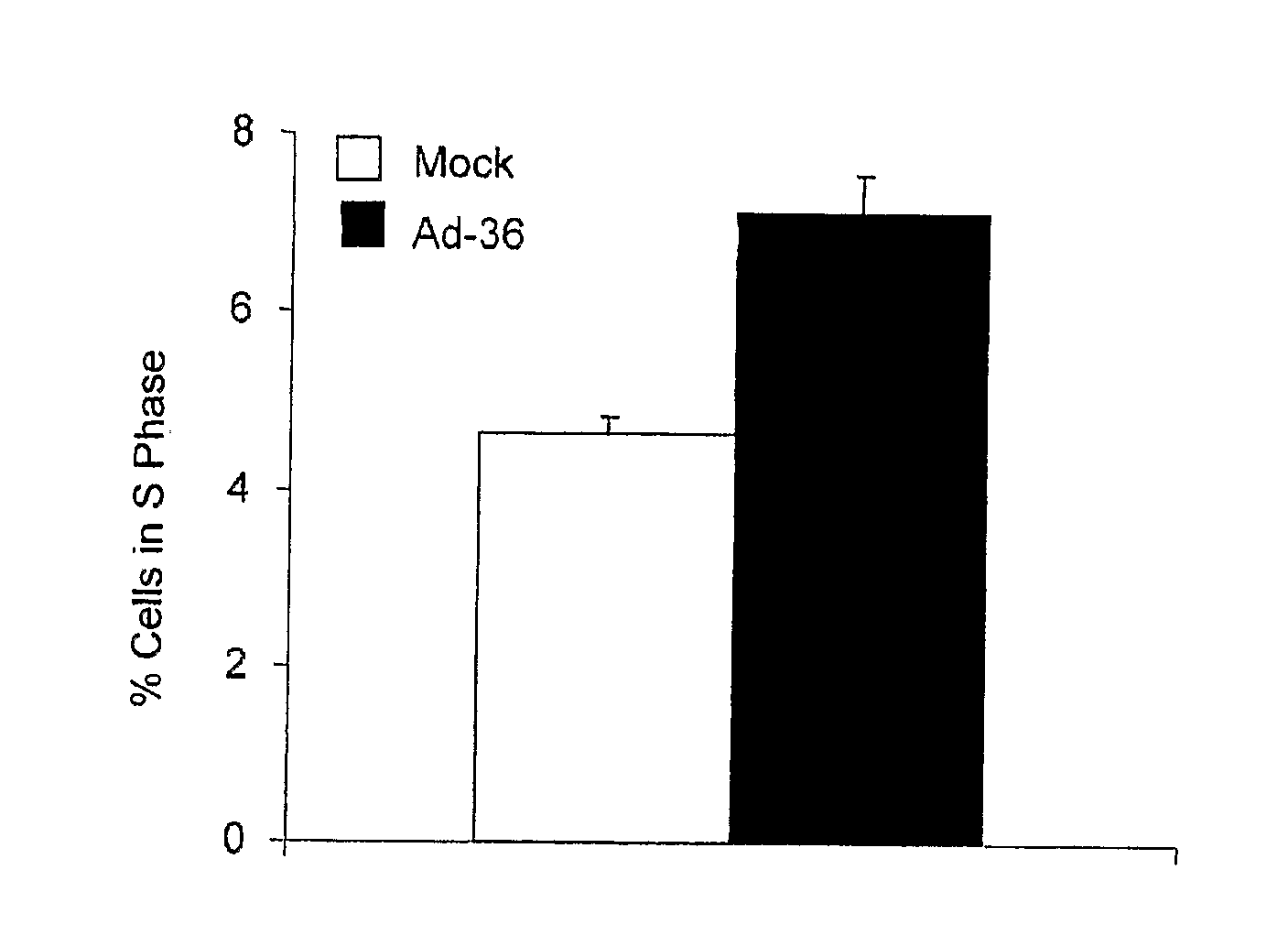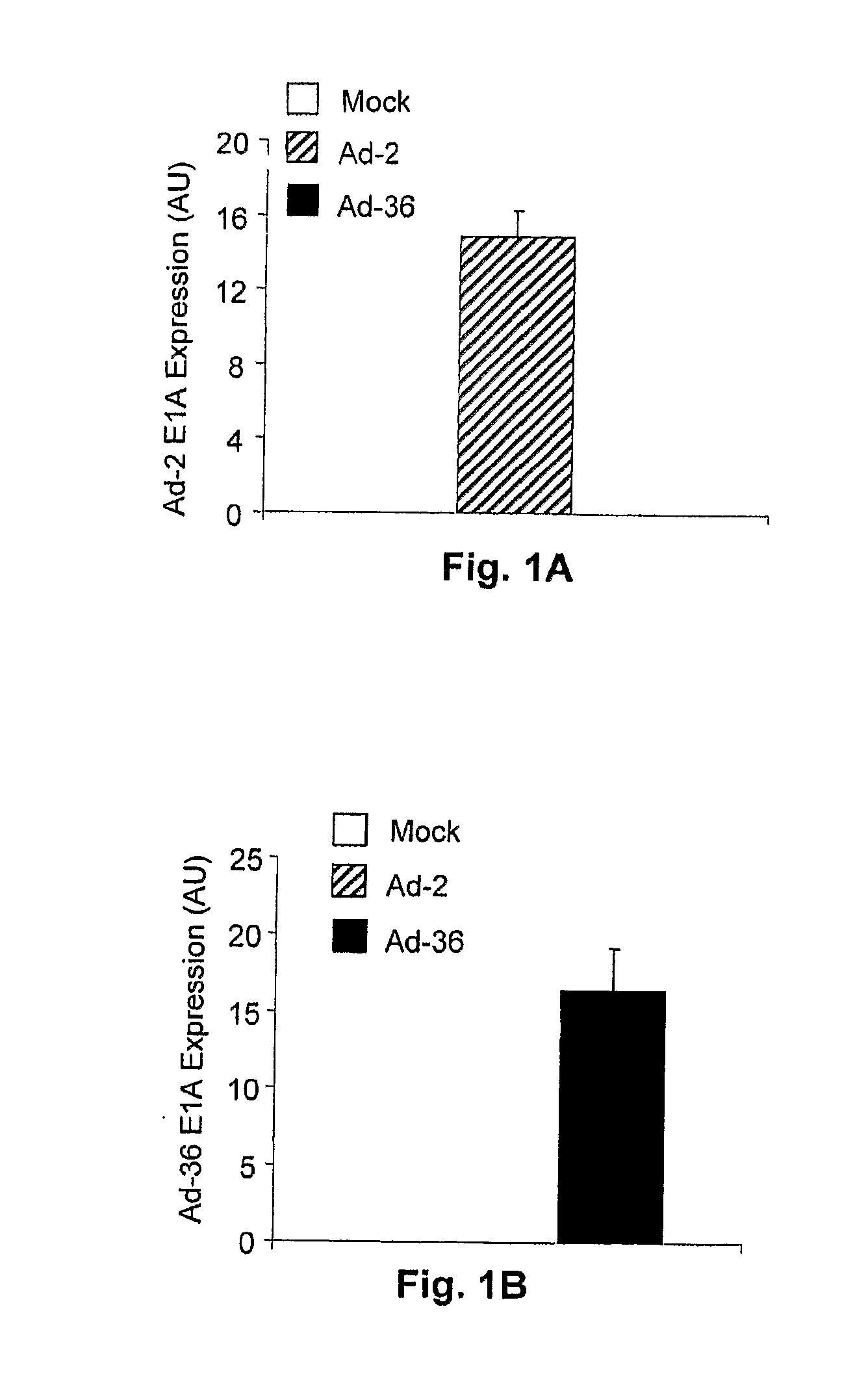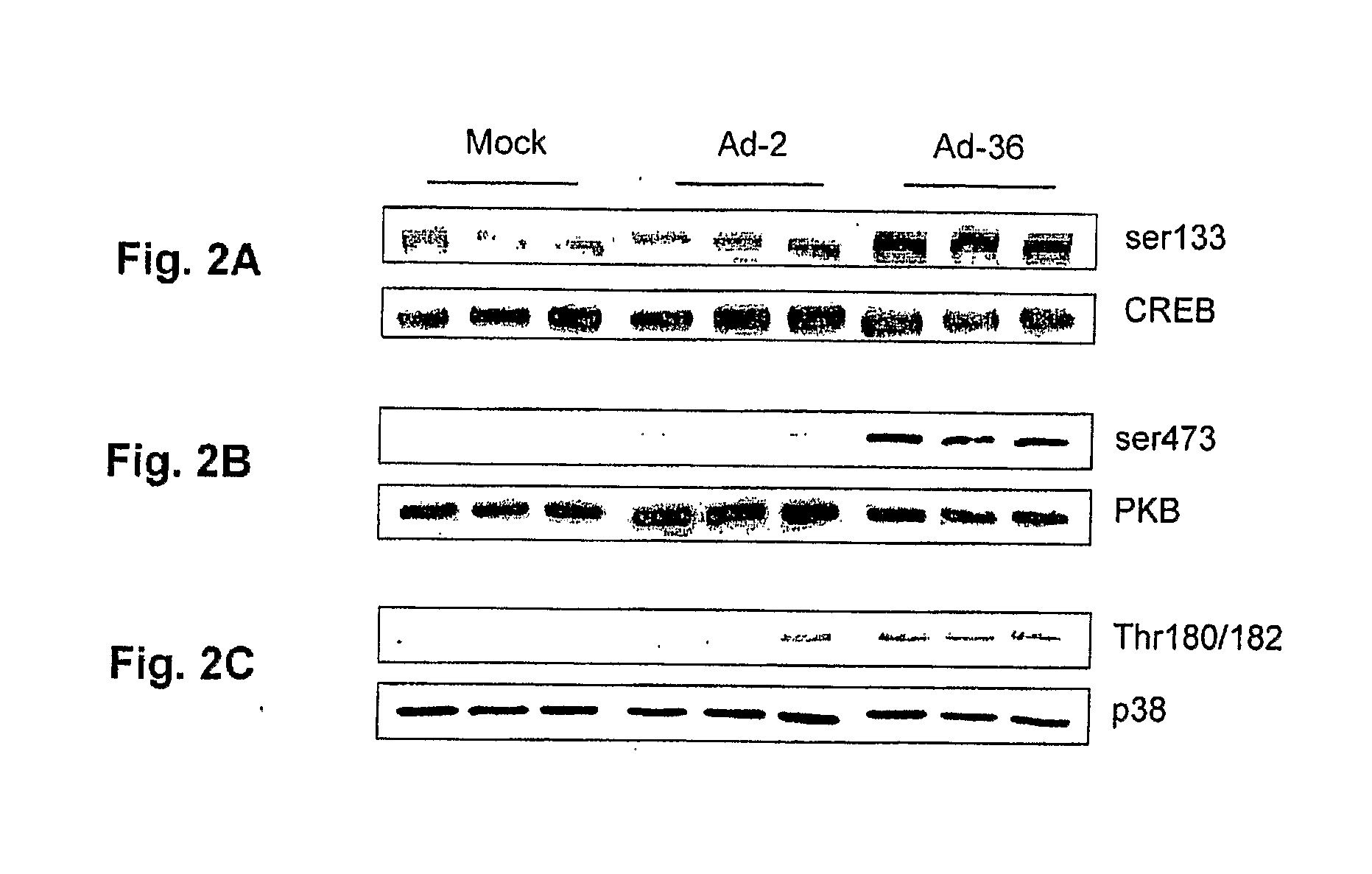Adenovirus 36 E4 orf 1 Gene and Protein and Their Uses
a technology of adenoviruses and proteins, applied in the field of adenoviruses 36 e4 orf 1 gene and protein and their uses, can solve the problems of severe co-morbidity, achieve greater activation of camp pathway, increase insulin sensitivity, and increase the activation of pi3 kinase pathway
- Summary
- Abstract
- Description
- Claims
- Application Information
AI Technical Summary
Benefits of technology
Problems solved by technology
Method used
Image
Examples
example 1
Materials and Methods
[0096]Abbreviations and roles of various compounds used herein are the following:
AbbreviationCompound and Role in this studycAMPCyclic adenosine mono-phosphate;Indicates cellular differentiation and lipidaccumulationCEBPsCCAAT enhancer binding proteins α, β, δ;indicator genes of preadipocyte differentiationcascadeCREBPCyclic AMP response element binding protein:Indicates cAMP activationGlut 1Glucose transporter 1:Participates in insulin independent glucose uptakeGlut 4Glucose transporter 4:Participates in insulin stimulated glucose uptakeILInterleukins (cytokines of immune response),Indicates inflammationMCP-1monocyte chemoattractant protein1;indicates inflammationMIFMacrophage inhibitory factor 1;prevents migration of macrophagesP38 (MAPK)P38 mitogen activated protein kinase;key molecule in cell differentiationPI3KPhosphotidyl inositol-3′ kinase:pivotal enzyme and indicator of cellular differenti-ation, proliferation, angiogenesis, glucose uptakeand lipid accum...
example 2
Ad-36 Induces Differentiation and Lipid Accumulation in Human Adipose Tissue Derived Stem Cells (hASC)
[0107]Rat preadipocytes (3T3-L1) provide a convenient in vitro model for studying adipogenesis. However, to determine the relevance of Ad-36 induced adipogenesis to humans, the effects of Ad-36 and Ad-2 infection were studied in primary hASC cultures. At confluency, hASC cultures were serum deprived for 18 h prior to infection with Ad-2 or Ad-36 at MOI 3.8. Both Ad-2 and Ad-36 viral gene expression was observed in experimentally infected hASC cultures (FIGS. 1A and 1B). FIG. 1A shows Ad-2 mRNA expression as isolated after one day infection, and FIG. 1B shows Ad-36 mRNA expression. After 24 h infection, proteins were isolated and analyzed by Western blotting. In FIG. 2A, CREB phosphorylation is shown to increase as a result of Ad-36 infection when compared with mock infection (p<0.012). In FIG. 2B, PKB phosphorylation is shown to increase in Ad-36 infected cultures as compared to moc...
example 3
E4 orf-1 is Sufficient and Necessary to Induce Lipogenic Changes
[0110]To conclusively demonstrate that E4 orf-1 is required for Ad-36 induced adipogenesis, siRNA was used to selectively knockdown E4 orf 1 expression in 3T3-L1 and hASC cultures infected with Ad-36. Ad-36 E4 orf-1 siRNA greatly reduced E4 orf 1 mRNA levels 24 h and 48 h post infection in Ad-36 infected 3T3-L1 cells and completely abolished the expression in hASC cultures 24 h post infection (data not shown). Ad-36 E4 orf 1 siRNA-mediated knockdown of E4 orf 1 gene expression resulted in the abolishment of the pro-adipogenic effects of Ad-36 on cAMP and PI3K pathways, pro-adipogenic genes, and lipid accumulation in hASC cultures.
[0111]At confluency, hASC cultures were serum deprived for 18 h prior to infection with Ad-36 E4 orf 1 siRNA, Ad-36+NC siRNA or Ad-36+E4 orf 1 siRNA. In FIGS. 6A-6C, proteins were harvested 24 h after infection and analyzed by Western blotting for CREB (FIG. 6A), PKB (FIG. 6B) and p38 (FIG. 6C)...
PUM
| Property | Measurement | Unit |
|---|---|---|
| Fraction | aaaaa | aaaaa |
| Fraction | aaaaa | aaaaa |
| Fraction | aaaaa | aaaaa |
Abstract
Description
Claims
Application Information
 Login to View More
Login to View More - R&D
- Intellectual Property
- Life Sciences
- Materials
- Tech Scout
- Unparalleled Data Quality
- Higher Quality Content
- 60% Fewer Hallucinations
Browse by: Latest US Patents, China's latest patents, Technical Efficacy Thesaurus, Application Domain, Technology Topic, Popular Technical Reports.
© 2025 PatSnap. All rights reserved.Legal|Privacy policy|Modern Slavery Act Transparency Statement|Sitemap|About US| Contact US: help@patsnap.com



